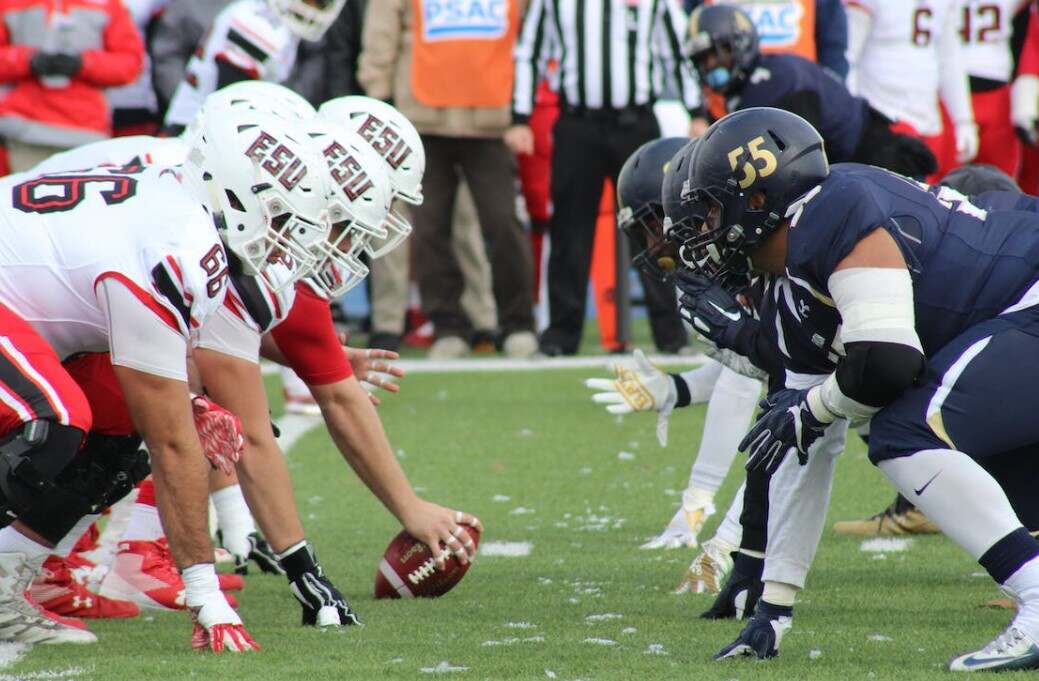
How To Understand American Football
Written By: Gridiron Elite Training

How To Understand American Football
Written By: Gridiron Elite Training
Football Basics For Beginners
American Football is a type of football that originated in the United States and is now being played around the world. The game is played on a rectangular field with goalposts at each end.
The field has three different zones:
1) The End Zone: This is where a player scores a touchdown for six points and kicks an extra point for one point.
2) The Field: This is where most of the play takes place, and it’s divided into two halves called “sides” or “ends,” with each team defending one side.
3) The Line of Scrimmage: An imaginary line drawn between both ends at the start of each play from which players cannot go beyond until they have handed off or passed.
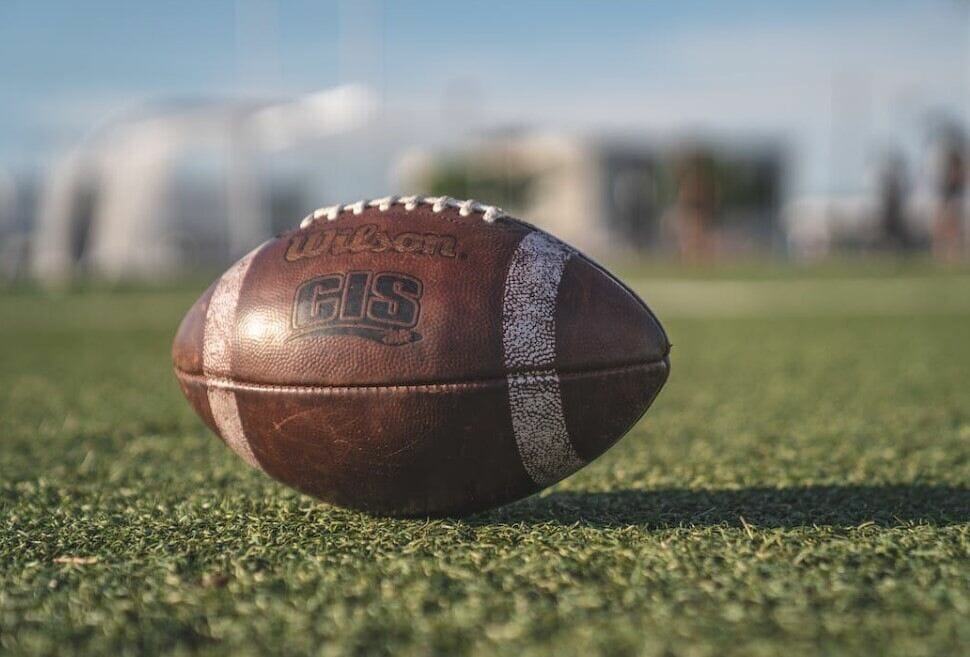
American Football is played by two teams of eleven players, with one designated as the offense and the other as the defense. The offense has four downs to advance ten yards or more toward their opponent’s goal line or to score points by going into their opponent’s end zone.
The defense has four downs to prevent the other team from scoring, taking control of the ball, or advancing past their ten-yard line.
The game’s object is to score more points than the other team by carrying or passing into their end zone or kicking the ball through the goalpost.
Basics Of Football Positions
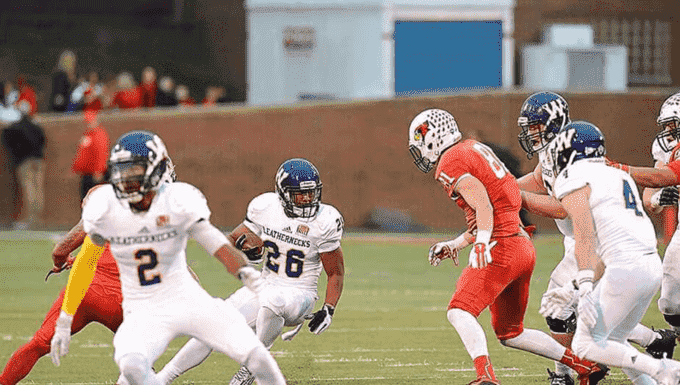
Offense For American Football
There are different ways to play American football, including flag football. A wide variety of rules vary by league, so it is essential to learn the rules of your league before playing.
Some people might think American football is easy to understand and play, but it can be pretty complex. It can take some time to learn the game and all its rules before being able to play well.
In American football, the team with possession of the ball is on offense, and its objective is to advance the ball toward the opposing team’s end zone.
The offensive team must advance the ball at least ten yards in four downs or less; if they fail, they surrender possession to their opponent. If they advance ten yards or more, they are given a new set of four downs.
Each offensive player on the field is assigned a specific position. These positions are generally classified according to their location on the field and the direction they face. In American football, these positions include:
Quarterbacks
Running Backs
H-backs/Fullbacks
Wide Receivers
Tight Ends
Offensive Line (Tackles, Guards, and Center).
The quarterback is usually responsible for passing (throwing) the ball downfield to an eligible receiver on each play. On other plays, he hands off the ball to a running back who runs with it. The other backs and receivers are often used as receivers (pass catchers) but may also be used as blockers during running plays. There are three positions on the offensive line: the center, the guards, and the tackles. The center is responsible for snapping to the quarterback and blocking the middle of the line. Guards help in both run support and pass protection, either by blocking a defensive lineman or by releasing to block a linebacker coming through an inside gap in the line. They can also be asked to pull for a play that sends them running downfield to block. Offensive tackles are often the most physically demanding positions on the field. They line up opposite a defensive end and are responsible for protecting the quarterback from the outside pressure in pass protection.
Defense For American Football
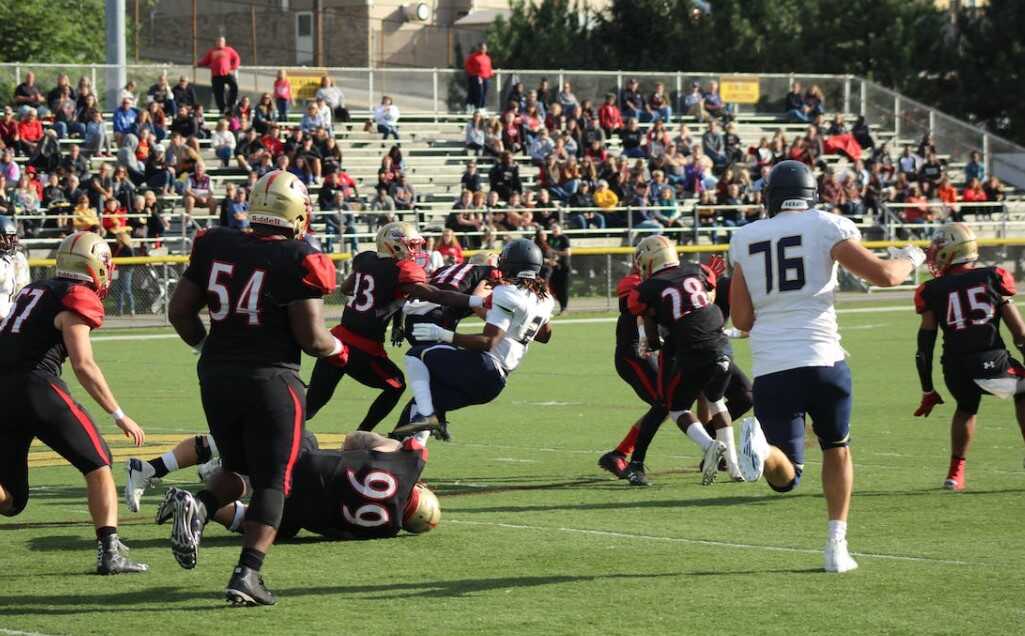
The defensive side of American football is the team trying to prevent the other team from scoring. There are eleven players on the defense, and they are divided into three groups:
Defensive Linemen (Defensive Tackles and Defensive Ends)
Linebackers (Inside and Outside Linebackers)
Defensive Backs (Cornerbacks and Safeties)
The linebacker is often the player who brings the ball carrier down. The cornerback is usually responsible for covering a receiver on passing plays and tackling the receiver after they catch a pass. The safety is positioned near the line of scrimmage and helps defend against short passes or runs. The defensive lineman line up opposite an offensive lineman and tries to tackle or sack a quarterback as he throws or hands off the ball to another player.
The defensive side of American football is a very physical sport, which means it’s not just about making tackles or interceptions but also about knocking players down on contact.
How To Understand American Football Terminology
There are plenty of football terms that you need to know before watching any game, so let’s take a look at some of them!
Downs: A down occurs when a team has four chances to advance 10 yards toward the goal line and score a touchdown.
First Down: Occurs when an offensive player completes a certain number of yards towards their opponent’s goal line. The offense gets four tries, or “downs,” to advance ten yards toward their opponent’s goal line to earn another set of four downs. If they fail, possession goes over to the opposing team.
Fourth Down: This occurs when an offensive player has already made three tries at advancing ten yards or more towards their opponent’s goal line but failed.
The Goal Line: A vertical plane extending from each goalpost to the nearest sideline.
Endzone: A 10-yard area at one end of the field where players can score points by carrying or catching a ball.
Touchdown: When a player carries or catches the ball across his opponent’s goal line, scoring six points for his team.
Kickoff: A play that starts a new possession for the receiving team after they have just scored or given up a score. It also starts each half of the game.
Punt: The ball is punted, or kicked, in other words. It is usually used when the ball has traveled past the line of scrimmage and the kicking team has not made a first down. A punt can be used to gain your team’s field position or prevent the other team from getting a good field position.
Field Goal: A Field Goal is when an offensive player kicks the ball through the goalposts past the other team’s defense and into their end zone, scoring three points for his team if successful.
Extra Point: After scoring a touchdown, a team can choose to have one of their players kick the ball through the upright goalpost for an extra point, which would give them one point and make it 7-0 instead of 6-0.
2-Point Conversion: A 2-point conversion is an extra point that can be scored after a touchdown by running or passing the ball into the end zone.
Flag: A flag signals for a penalty to be called, usually because of an illegal play or unsportsmanlike conduct on behalf of one team or player.
Pass: A football pass is when the football is thrown from one player, and a teammate catches the ball.
Reception: In football is when a player catches the ball and gets to run with it.
Handoff: This is when an offensive player hands off (or passes) the ball to another player, who then runs with it downfield.
Fumble: When a player drops the ball while carrying it or after another player has touched it.
Blocking: An offensive player tries to stop defensive players from tackling the ball carrier by standing in their way and preventing them from getting through.
Tackling: A defensive player tries to stop the ball carrier by grabbing him or her and bringing him or her to the ground.
Sack: A sack in football is when a player tackles the quarterback who has possession of the ball or forces them out of bounds behind the line of scrimmage.
Coverage: This is the term for the defensive team’s plan of attack against a particular pass pattern or set of pass patterns by the offense.
Interception: When a defensive player catches an opposing player’s pass, giving their team possession of the football.
A team score points when they successfully advance downfield and into their opponent’s end zone. To score, one of these types of plays must take place:
1) Touchdown (6 points) occurs when the ball is advanced into the end zone, in possession of a player, before time expires.
2) Field Goal (3 points) occurs when a player kicks the ball through the goal post to score 3 points.
3) Safety (2 points) occurs when a player is tackled in his end zone when he has possession of the football.
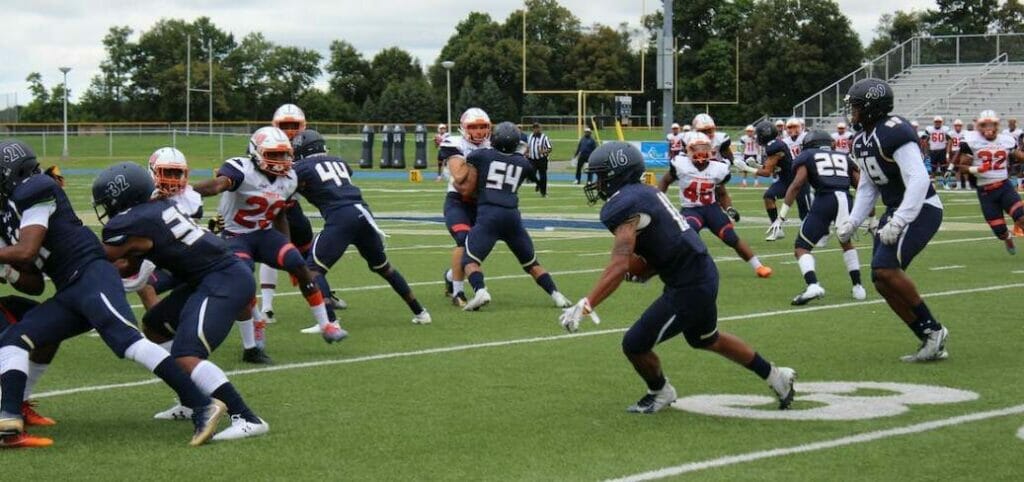
What are the Rules of American Football?
The rules of American football are the laws that govern the game. These rules vary slightly from league to league and are enforced by a group of officials known as the officiating crew. American football rules are designed to promote safety and minimize the risk of injury.
American football rules dictate how the game is played on the field. They range from player conduct to methods of scoring. No matter what competition level, these laws are enforced by an officiating crew of six members.
The officials consist of a referee who is in charge of the general operation and control of the game and makes all decisions regarding rule interpretations; umpires who judge whether plays are out of bounds or incomplete and other matters; line judges who watch for illegal motion, offside (players on offense coming into space before it has been snapped), and whether plays have been correctly marked; field judges who judge if catches have been made or if passes are complete or incomplete; back judges who think how far forward passes can be thrown (and will generally stand behind each goal line); side judges who watch for violations such as encroachment and throws that cross the line of scrimmage; and head linesmen who are responsible for spotting the ball on the ground during kickoffs, field goals, punts, and extra points.
You should now have a basic understanding of American Football
American football is a popular sport in the United States. It is a highly competitive and physical game that has many rules. It is a full-contact sport with a strong emphasis on speed and agility.
American football aims to score more points than the opposing team by tackling, blocking, or catching the ball (known as “downs”). The game consists of four 15-minute quarters with a 15-minute halftime break.
There are 11 players on each side of the field, including one quarterback, one kicker, and ten other players, divided into three groups: linemen, linebackers, and defensive backs. The offensive team must advance at least 10 yards in four downs. If they fail, they turn over possession to their opponents.
Gridiron Elite Training
It’s our goal at Gridiron Elite Training to help you understand and train for the game of football.
If you need some football training workouts for your speed and agility training, you can read our latest posts on “How To Get Explosive Speed For Football” and “Speed Training Tips For Football Players.”
Suppose you’re a serious football player looking to play at the next level. You can access our sports performance training programs, football drills, workouts, and the Gridiron Recruiting Center inside “The Gridiron Academy” to help you with your football recruiting.
Subscribe To Get Updates On Newly Released Articles
Don't forget to share this post!
Continue Reading More Football Training Tips Below
Related Articles
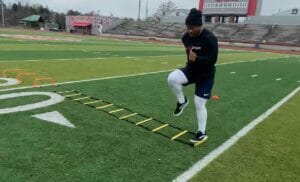
Agility Ladder Workout At Home For Football Players
Get quicker and more agile with this simple agility ladder workout at home. Agility ladders are a great tool for football players to improve footwork.

How To Build Leg Strength For Football
Learn how to increase leg power for football. Find out how to strengthen hamstrings, quads, and hip flexors so you can play at your best on the field.
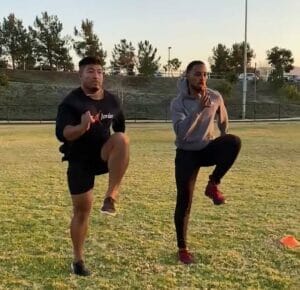
How To Increase Sprint Speed And Acceleration
Learn how to improve your sprint speed. These 5 ways to increase your sprinting speed will help you run faster and farther.

Gridiron Elite Training was started to help educate and provide football players with a community to receive proper training and guidance.
We created “The Gridiron Elite Academy” which is an online football performance network that provides football players of all levels with sports performance workout programs, football position-specific drills, mindset coaching, mental toughness training, recruiting guidance and help, and nutrition programs.


